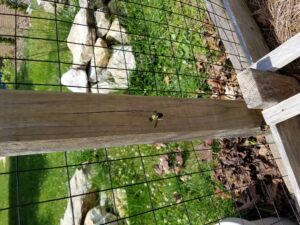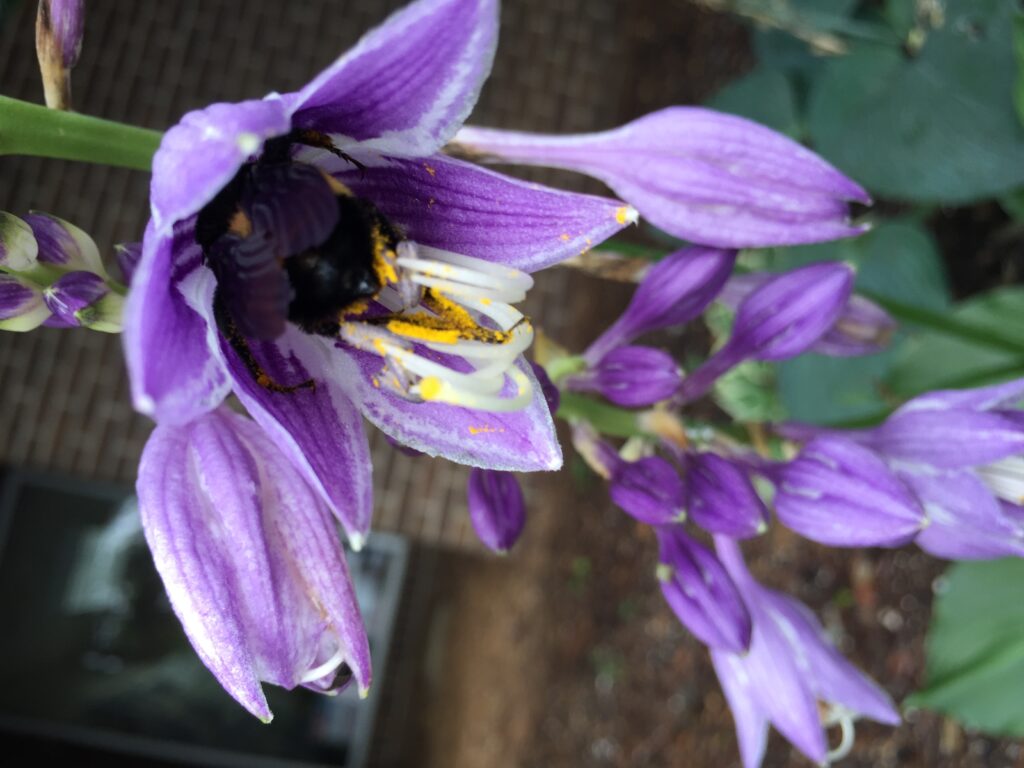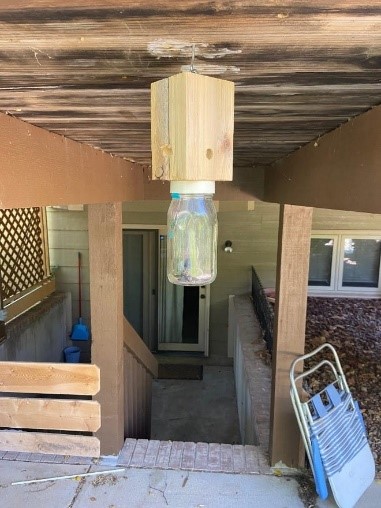Pest Alert – Carpenter Bees
go.ncsu.edu/readext?807478
en Español / em Português
El inglés es el idioma de control de esta página. En la medida en que haya algún conflicto entre la traducción al inglés y la traducción, el inglés prevalece.
Al hacer clic en el enlace de traducción se activa un servicio de traducción gratuito para convertir la página al español. Al igual que con cualquier traducción por Internet, la conversión no es sensible al contexto y puede que no traduzca el texto en su significado original. NC State Extension no garantiza la exactitud del texto traducido. Por favor, tenga en cuenta que algunas aplicaciones y/o servicios pueden no funcionar como se espera cuando se traducen.
Português
Inglês é o idioma de controle desta página. Na medida que haja algum conflito entre o texto original em Inglês e a tradução, o Inglês prevalece.
Ao clicar no link de tradução, um serviço gratuito de tradução será ativado para converter a página para o Português. Como em qualquer tradução pela internet, a conversão não é sensivel ao contexto e pode não ocorrer a tradução para o significado orginal. O serviço de Extensão da Carolina do Norte (NC State Extension) não garante a exatidão do texto traduzido. Por favor, observe que algumas funções ou serviços podem não funcionar como esperado após a tradução.
English
English is the controlling language of this page. To the extent there is any conflict between the English text and the translation, English controls.
Clicking on the translation link activates a free translation service to convert the page to Spanish. As with any Internet translation, the conversion is not context-sensitive and may not translate the text to its original meaning. NC State Extension does not guarantee the accuracy of the translated text. Please note that some applications and/or services may not function as expected when translated.
Collapse ▲Carpenter Bees
 Every year carpenter bees tunnel into wood around homes. The female bee bores a half inch hole into wooden siding, porch rails, furniture, fencing, decking or whatever wood she can sink her mandibles into.
Every year carpenter bees tunnel into wood around homes. The female bee bores a half inch hole into wooden siding, porch rails, furniture, fencing, decking or whatever wood she can sink her mandibles into.
Female carpenter bees can live in their tunnel for years. Sawdust rains down as she expands her home each season. Eventually the tunneling can weaken the wood and cause safety issues with decks, barns and furniture. Woodpeckers will sometimes tear off the siding to get at the bee larvae further damaging structures.
Carpenter Bees All Bad?
Despite the insect’s propensity for destroying wooden structures, the carpenter bee is actually a beneficial insect in some ways. The female collects pollen and nectar from flowers thereby providing important pollinating services. I do not like to kill insects or any other creature for no reason. However, I have a saying; ‘You can’t let a critter destroy your home.’
Controlling Carpenter Bee Damage on Homes
So, how can you stop carpenter bees from boring holes into your wooden structures and furniture? I recommend a multistep approach. First, if you live in a highly susceptible home such as a log cabin, you should treat the wood with a preservative such as boron. Then use insecticides containing pyrethroid insecticides such as permethrin, deltamethrin, or bifenthrin applied to wood in the spring and again in the summer can protect wood. If you are uncomfortable or unable to do this work yourself, local home pest control companies will be glad to do it for you. A simple coat of high quality paint can prevent carpenter bee tunneling.
If bees have already bored holes in your siding, then a little insecticide sprayed around the entrance of the tunnel will get the female. As she leaves and enters her home, she tracks the insecticide into the tunnel eventually killing herself and her larvae. A little caulk and paint can repair the hole and protect the damaged wood from rot.
Male carpenter bees hover outside the female’s tunnel and defend it from other would-be suitors. The males swoop and threaten any passerby including people as they guard their mate’s home. It may sound silly but a tennis, badminton, or racquet ball racquet can be very effective at killing the male bees.






